Sequential activation of uterine epithelial IGF1R by stromal IGF1 and embryonic IGF2 directs normal uterine preparation for embryo implantation
- PMID: 34097060
- PMCID: PMC8648386
- DOI: 10.1093/jmcb/mjab034
Sequential activation of uterine epithelial IGF1R by stromal IGF1 and embryonic IGF2 directs normal uterine preparation for embryo implantation
Abstract
Embryo implantation in both humans and rodents is initiated by the attachment of a blastocyst to the uterine epithelium. For blastocyst attachment, the uterine epithelium needs to transform at both the structural and molecular levels first, and then initiate the interaction with trophectoderm. Any perturbation during this process will result in implantation failure or long-term adverse pregnancy outcomes. Endocrine steroid hormones, which function through nuclear receptors, combine with the local molecules produced by the uteri or embryo to facilitate implantation. The insulin-like growth factor (IGF) signaling has been reported to play a vital role during pregnancy. However, its physiological function during implantation remains elusive. This study revealed that mice with conditional deletion of Igf1r gene in uteri suffered from subfertility, mainly due to the disturbed uterine receptivity and abnormal embryo implantation. Mechanistically, we uncovered that in response to the nidatory estrogen on D4 of pregnancy, the epithelial IGF1R, stimulated by the stromal cell-produced IGF1, facilitated epithelial STAT3 activation to modulate the epithelial depolarity. Furthermore, embryonic derived IGF2 could activate both the epithelial ERK1/2 and STAT3 signaling through IGF1R, which was critical for the transcription of Cox2 and normal attachment reaction. In brief, our data revealed that epithelial IGF1R was sequentially activated by the uterine stromal IGF1 and embryonic IGF2 to guarantee normal epithelium differentiation during the implantation process.
Keywords: IGF1; IGF1R; IGF2; blastocyst; implantation; uterine epithelium.
© The Author(s) (2021). Published by Oxford University Press on behalf of Journal of Molecular Cell Biology, CEMCS, CAS.
Figures
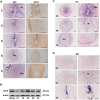
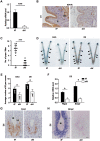
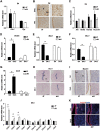
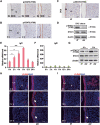

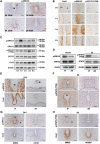
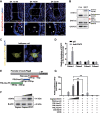

Similar articles
-
Insulin growth factor adjustment in preimplantation rabbit blastocysts and uterine tissues in response to maternal type 1 diabetes.Mol Cell Endocrinol. 2012 Jul 6;358(1):96-103. doi: 10.1016/j.mce.2012.03.007. Epub 2012 Mar 20. Mol Cell Endocrinol. 2012. PMID: 22465205
-
STAT3 regulates uterine epithelial remodeling and epithelial-stromal crosstalk during implantation.Mol Endocrinol. 2013 Dec;27(12):1996-2012. doi: 10.1210/me.2013-1206. Epub 2013 Oct 7. Mol Endocrinol. 2013. PMID: 24100212 Free PMC article.
-
Uterine Epithelial LIF Receptors Contribute to Implantation Chamber Formation in Blastocyst Attachment.Endocrinology. 2021 Nov 1;162(11):bqab169. doi: 10.1210/endocr/bqab169. Endocrinology. 2021. PMID: 34402888
-
Implantation in the baboon: endometrial responses.Semin Reprod Endocrinol. 1999;17(3):257-65. doi: 10.1055/s-2007-1016233. Semin Reprod Endocrinol. 1999. PMID: 10797944 Review.
-
Minireview: Steroid-regulated paracrine mechanisms controlling implantation.Mol Endocrinol. 2014 Sep;28(9):1408-22. doi: 10.1210/me.2014-1074. Epub 2014 Jul 22. Mol Endocrinol. 2014. PMID: 25051170 Free PMC article. Review.
Cited by
-
Trophectoderm differentiation to invasive syncytiotrophoblast is promoted by endometrial epithelial cells during human embryo implantation.Hum Reprod. 2022 Apr 1;37(4):777-792. doi: 10.1093/humrep/deac008. Hum Reprod. 2022. PMID: 35079788 Free PMC article.
-
Impact of hyperglycaemia on cellular microenvironment and function of endometrium and uterine tube: scoping review focused on infertility in diabetic women.Front Cell Dev Biol. 2025 May 23;13:1582039. doi: 10.3389/fcell.2025.1582039. eCollection 2025. Front Cell Dev Biol. 2025. PMID: 40486907 Free PMC article. Review.
-
CREB1 Is Involved in miR-134-5p-Mediated Endometrial Stromal Cell Proliferation, Apoptosis, and Autophagy.Cells. 2023 Oct 31;12(21):2554. doi: 10.3390/cells12212554. Cells. 2023. PMID: 37947633 Free PMC article.
-
Genome-wide single nucleotide polymorphism (SNP) data reveal potential candidate genes for litter traits in a Yorkshire pig population.Arch Anim Breed. 2023 Nov 23;66(4):357-368. doi: 10.5194/aab-66-357-2023. eCollection 2023. Arch Anim Breed. 2023. PMID: 38111388 Free PMC article.
-
Endometrial DNA methylation signatures during the time of breeding in relation to the pregnancy outcome in postpartum dairy cows fed a control diet or supplemented with rumen-protected methionine.Front Genet. 2024 Jan 24;14:1267053. doi: 10.3389/fgene.2023.1267053. eCollection 2023. Front Genet. 2024. PMID: 38327702 Free PMC article.
References
-
- Auernhammer C.J., Melmed S. (2000). Leukemia-inhibitory factor—neuroimmune modulator of endocrine function. Endocr. Rev. 21, 313–345. - PubMed
-
- Chen J.R., Cheng J.G., Shatzer T., et al. (2000). Leukemia inhibitory factor can substitute for nidatory estrogen and is essential to inducing a receptive uterus for implantation but is not essential for subsequent embryogenesis. Endocrinology 141, 4365–4372. - PubMed
-
- Constância M., Hemberger M., Hughes J., et al. (2002). Placental-specific IGF-II is a major modulator of placental and fetal growth. Nature 417, 945–948. - PubMed
Publication types
MeSH terms
Substances
LinkOut - more resources
Full Text Sources
Research Materials
Miscellaneous

